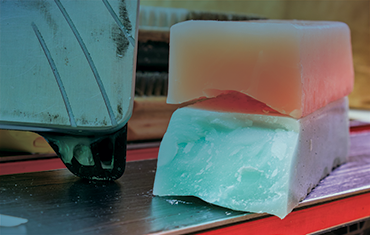New Non-Commoditized Applications Set Stage for the Future Wax Supply Demand Balance
PARSIPPANY, NJ, April 25, 2020 – While the shift from conventional petroleum wax-based products to synthetic and vegetable waxes is becoming intense, the wax landscape is also changing on the end-use side. Demand for conventional mainstream wax applications, such as candles, has slowed down. Relatively newer rheology and surface applications are the fastest-growing applications, finds Kline’s just-published Global Wax Industry: Market Analysis and Opportunities report. To learn more about the most recent findings, REGISTER for the webinar.
The ability of new and growing applications to adapt to non-petroleum wax types will set the stage for future wax supply and demand balance. This development is here to stay post-COVID-19 market. However, with China, which supplies nearly half of FRP globally, being severely affected by the COVID-19 economic slowdown, it is estimated that the 2020 wax supply scenario will be quite different than 2019, as the global wax industry is likely to see a significant shortage in petroleum wax supplies during the year.
Global demand for waxes is growing at 1.3% annually. Amidst this growth, wax demand is experiencing a clear drift toward non-commoditized applications such as rheological, surface, healthcare, cosmetics, and personal care products. Conventional and more commoditized wax applications, such as candles, board sizing, and packaging, have slowed down with changing consumer tastes, socioeconomic development, and innovation. Non-commoditized, more specialized applications, which require superior-quality finished wax products, have been providing grounds to alternative wax suppliers to proliferate. Currently, synthetic waxes account for more than two-thirds of wax demand in rheological and surface applications. Superior quality petroleum waxes account for more than two-thirds of wax demand in the healthcare, cosmetics, and personal care industries.
The upturn in demand for highly refined finished wax products is creating growth opportunities for suppliers of synthetic waxes, such as FT, PE, and AO. These waxes are carving out spaces in applications where highly refined petroleum waxes have been used in the past. This competitive overlap between synthetic and petroleum waxes is also keeping the prices of petroleum waxes in check, despite a continuous decline in their supply.
“To gain market share, most synthetic wax suppliers position their waxes at prices closer to those of petroleum waxes,” notes Pooja Sharma, project manager. “In fact, growing supplies of FT and AO waxes are likely to shift the wax demand balance further toward synthetic waxes in the future, as end customers who look to secure long-term supply contracts may perceive synthetic waxes as more stable options. However, at present, the supplies of synthetic waxes stand in excess to their demand in wax applications, with the balance being directed toward other non-wax applications.”
The demand for vegetable- or plant-derived waxes is seeing substantial growth in applications that are under greater influence of societal norms, culture, beliefs, and lifestyles. With their beneficial green label, these waxes are making steadier strides into the market space for low-melt, soft waxes, making high volume advances into more commodity-like applications such as candles. Vegetable wax jellies are also replacing specialty petroleum jellies in cosmetics applications. These waxes not only play an important role for consumers, but soft vegetable waxes are also difficult to substitute across these applications by other aggressively growing high-melt and harder synthetic waxes. Encouraged by such applications, the supplies of vegetable waxes are forecast to experience annual growth of 2.0% to 2.5% in the next five years.
Forces from both sides of the value chain have placed the wax businesses at a juncture where both suppliers and end consumers must revaluate their business. Growing supplies of synthetic and vegetable waxes seem to be alleviating the deficit of petroleum waxes in the market for now; however, will the incremental supply of alternative waxes be able to meet the deficit in the future? Could changing wax availability stir changes in wax formulations and drive price-sensitive end consumers toward substitutes for waxes? It has become crucial for wax value-chain participants, such as base oil refiners, wax de-oilers, blenders, distributors, and end consumers, to assess these questions in light of the latest developments in the wax industry. Kline’s latest edition Global Wax Industry, Market Opportunities and Challenges offers an understanding of the forces in the wax business as well as the recent developments that are driving the global wax market.

